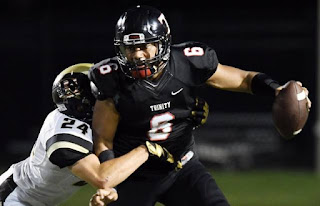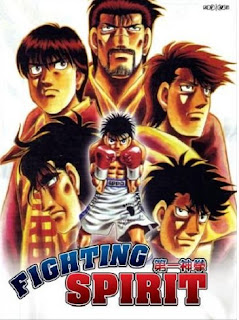 |
| Basketball Basics For New Players And Coaches |
Learn basic rules, concepts, layout of court positions and players
The rules of basketball, fortunately, are quite simple. However, for young players, certain rules can be easily forgotten. The three second rule that is how long it can be an offensive player before clearing key is a good example.
Once you have learned the game on your computer, it is a simple way to make sure you do not forget them. Ask them to tell the rules. Spend a few minutes during each interrogation practice. Have fun. In addition, you can teach and reinforce the rules of the game during the exercises.
Before you can teach the rules to your computer, you need to know them yourself.
Once you have learned the game on your computer, it is a simple way to make sure you do not forget them. Ask them to tell the rules. Spend a few minutes during each interrogation practice. Have fun. In addition, you can teach and reinforce the rules of the game during the exercises.
Before you can teach the rules to your computer, you need to know them yourself.
Standards
Basketball is a team sport. Two teams of five players each attempt to score a shot in a hoop high 10 feet above the ground. The game is played on a rectangular floor called the yard, and there is a ring at each end. The court is divided into two main sections per median line. If the offensive team puts the ball in play behind the midfield line, it has ten seconds for the ball on the midfield of the line. If it does, the defense recovers the ball. Once the offensive team the ball on the line of cut halfway, and can not be in possession of the ball in the area at the back of the line. If it does, the defense recovers the ball.

Court
Basketball court 1
The ball moves in the yard to the basket pass or dribble. The team with the ball is called the offense. The team without the ball is called defense. They try to steal the ball, shoot the contest, steal and divert passes, and collect rebounds.When a team makes a basket, scoring two points and the ball passes to the other team. If a basket, or a goal on the field, it is made outside the three-point bow, then this basket is worth three points. A free-kick is worth a point. Free throws are awarded to a team according to certain formats that involve the number of faults committed in an environment and / or the type of offense. Masking a shooter always results in two or three free throws being awarded to the shooter, depending on where he was when he shot. If it was beyond the three-point line, then you get three shots. Other types of failures do not lead to free throws are awarded until a number has accumulated during the semester. Once this number is reached, then the player who has suffered gets a chance of '1-and-1'. If you do your first throw tent one second. If the first shot miss, the ball is live on the rebound.
Each game is divided into sections. All the levels have two halves. In college, each half-lasts twenty minutes. In high school and below, the halves are divided into eight (and sometimes six) minutes. In the pros, the rooms have twelve minutes. There is a difference of several minutes between the halves. Differences between neighborhoods are relatively short. If the score is tied at the end of the regulation, periods of different lengths of overtime are played until a winner emerges.
Each team is awarded a basket or a goal to defend. This means that the other basket is the basket score. At half-time, the teams change their goals. The game starts with a player from either the central court of the team. A referee throws the ball in between. The player who gets his hands on the ball leans to a teammate. This is called a score. In addition to stealing an opposing player's ball, there are other ways for a team to get the ball.
One of these means is if the other team commits a fault or violation.
Fouls and Violations
Wiles
Recommended Resources for Youth Coaches
• Basketball for youth training successfully
• 60 years of youth basketball
• Simple Crime for Youth Basketball
Personal mistakes: personal mistakes include any illegal physical contact.
Knock
contractor
fast
participation
Illegal selection / screen - when an offensive player is moving. When an offensive player finds a member and makes physical contact with a defender in an attempt to block the defender's path.
Penalties Personal Foul: If a player is shooting while a dirty, then he gets two free throws if your shot does not fall, but only a free kick if his shot comes.
Three free throws are awarded if the player is dirty while shooting a goal and three shot from the point is lost. If a player is dirty while shooting three shooting points and does so anyway, he is awarded a free kick. Thus, he could score four points on the game.
Inbounds. If a foul is committed while not firing the ball is given to the team that has committed a foul. Get the ball in the nearest side or line, outside the limits, base and 5 seconds to pass the ball to the court.
A a. If the team commits a foul to seven or more fouls in the game, the suffering player receives a free kick. If you make your first shot, it is awarded another free kick.
Ten or more defects. If the team commits a fault with ten or more defects, the player will receive two free throws missing.
Load. An offensive foul is committed when a player pushes or executes on a defensive player. The ball is handed to the team that the offense has been committed.
Lock. The blockade is an illegal personal contact as a result of a defender does not set the position in time to prevent the opponent is directed to the basketball.
Blatant foul. Violent contact with an opponent. This includes shots, kicks and punches. This type of defect results in more free throws offensive holding possession of the ball after free throws.
Intentional misconduct. When a player is in physical contact with another player without any reasonable effort to steal the ball. It is an appeal to the officials.
Technical foul. Technical foul. A player or coach may make this type of defect. It does not involve contact with the player or ball, but is the "means" game. Absence of language, obscenity, obscene gestures and even arguments can be considered a technical fault, as technicians on incorrectly or diving during warm-up.
A a. If the team commits a foul to seven or more fouls in the game, the suffering player receives a free kick. If you make your first shot, it is awarded another free kick.
Ten or more defects. If the team commits a fault with ten or more defects, the player will receive two free throws missing.
Load. An offensive foul is committed when a player pushes or executes on a defensive player. The ball is handed to the team that the offense has been committed.
Lock. The blockade is an illegal personal contact as a result of a defender does not set the position in time to prevent the opponent is directed to the basketball.
Blatant foul. Violent contact with an opponent. This includes shots, kicks and punches. This type of defect results in more free throws offensive holding possession of the ball after free throws.
Intentional misconduct. When a player is in physical contact with another player without any reasonable effort to steal the ball. It is an appeal to the officials.
Technical foul. Technical foul. A player or coach may make this type of defect. It does not involve contact with the player or ball, but is the "means" game. Absence of language, obscenity, obscene gestures and even arguments can be considered a technical fault, as technicians on incorrectly or diving during warm-up.
























